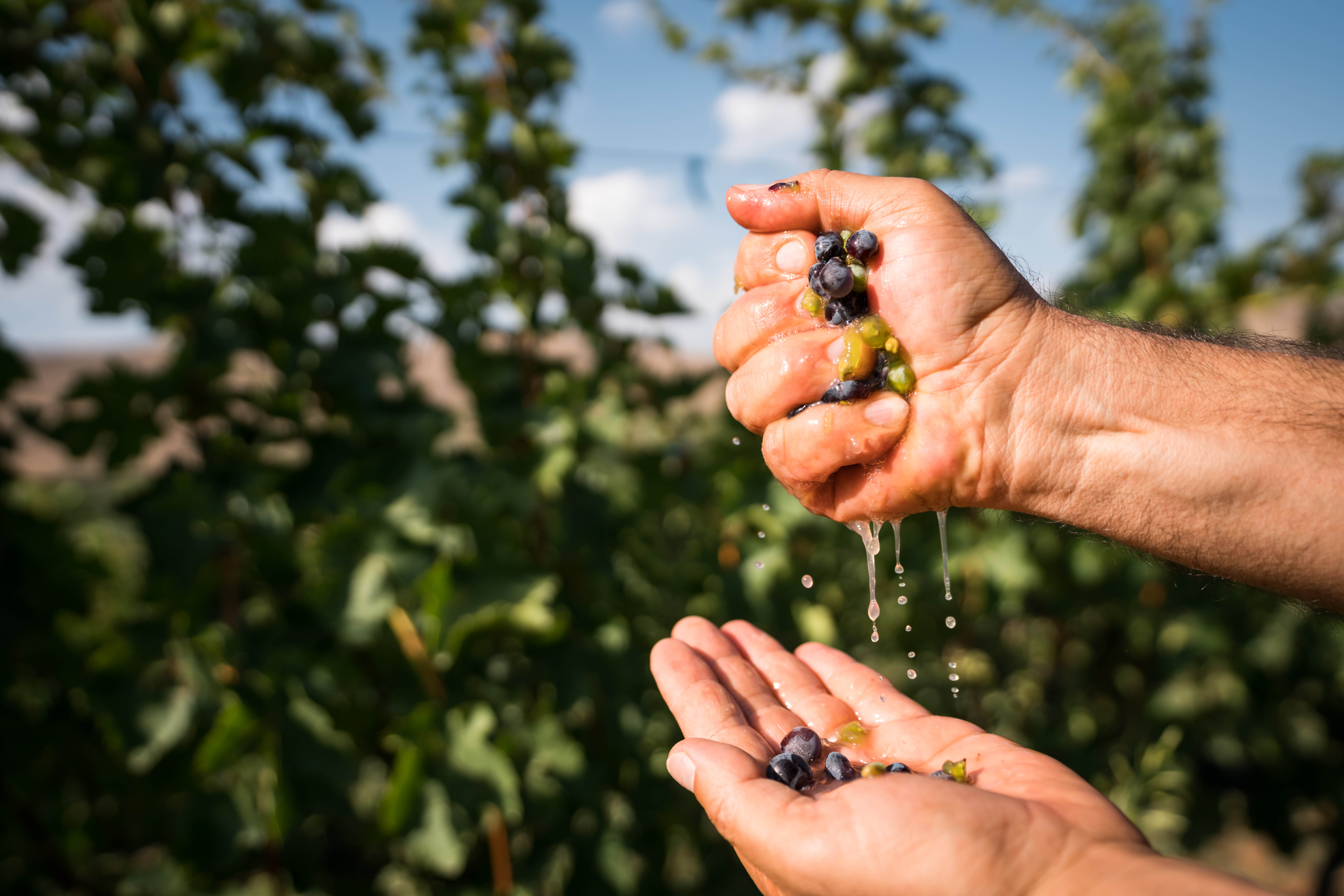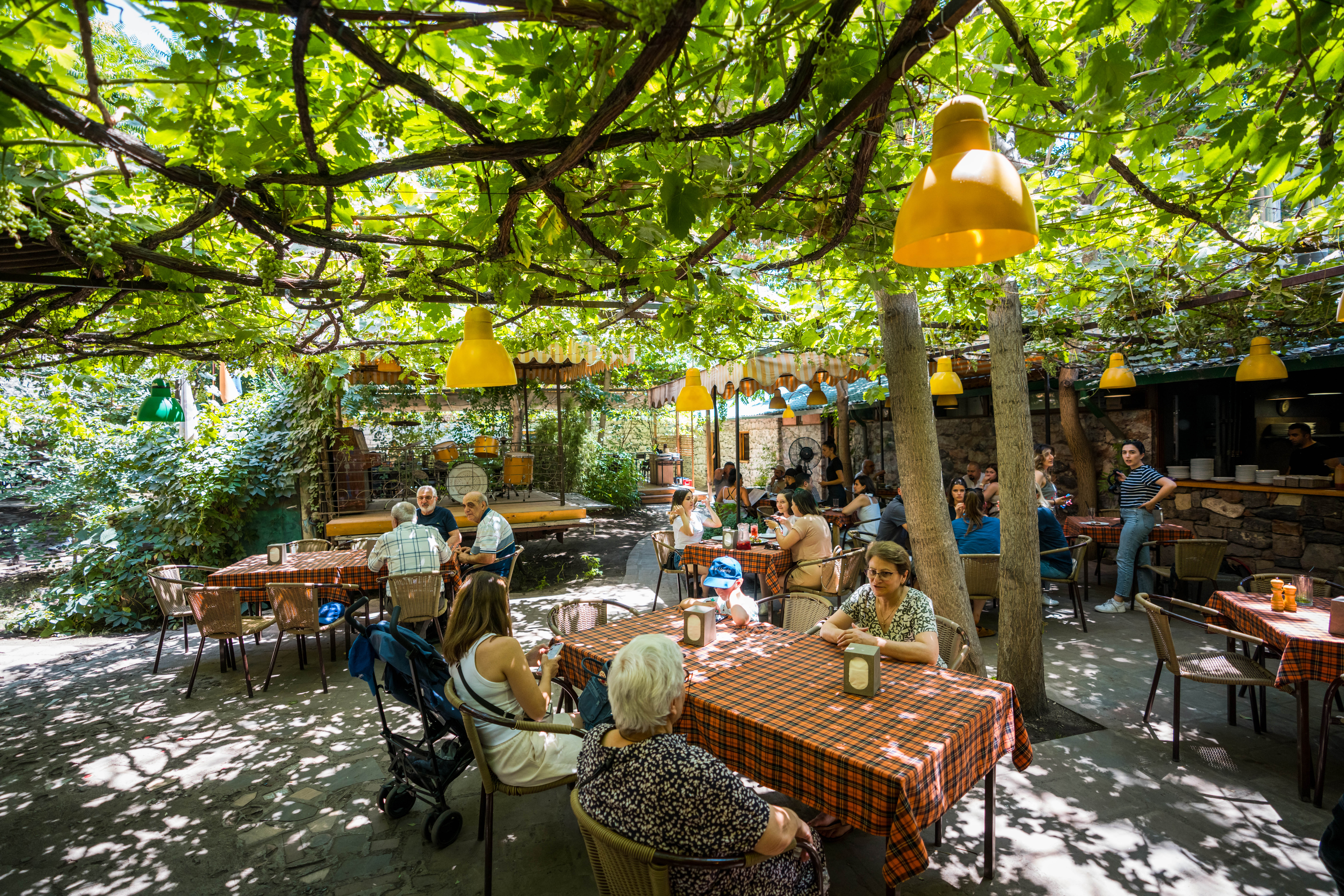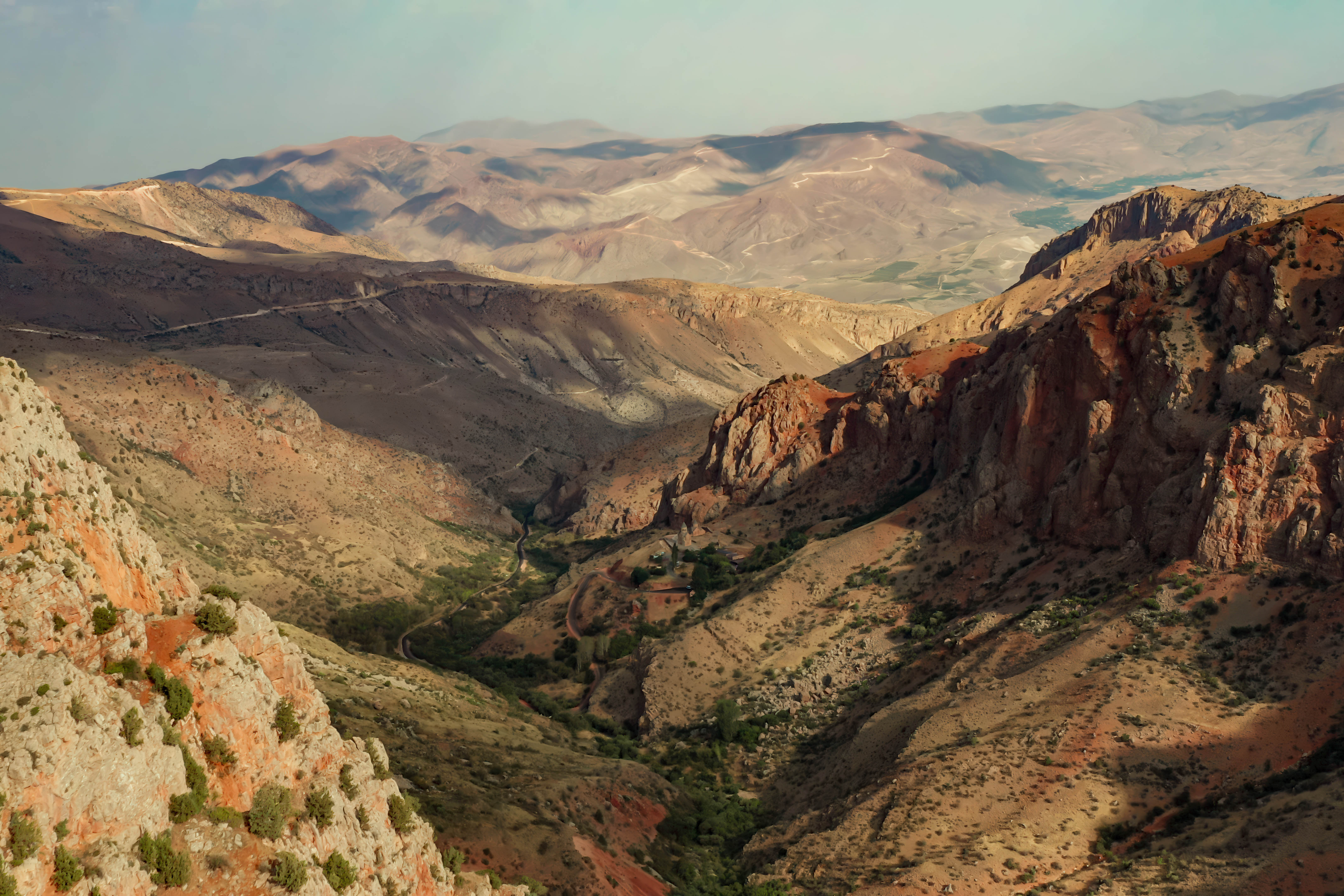Photography by Jake Belvin
The first wine bar to open in Yerevan, the pink-stoned capital of Armenia, seemed truly destined to fail. In Vino was located on what was in 2012 the very sleepy Saryan Street, which loops around the edge of the downtown area and was known mainly for its electronics shops. There was certainly a drinking culture, but it was a legacy of Soviet times: modern Armenians were hopelessly hooked on fruit vodka. Worse still, the wine bar’s co-founder, Mariam Saghatelyan, then aged 19, had “only about 10 drinkable Armenian bottles” to offer.
“People would open the door, walk in, and say, ‘Oh, wine?’ and then leave,” Saghatelyan told me on my visit to Armenia last summer. “Even the people whose wine we were selling told us it was never going to work.” And yet, work it did. In fact, the wine bar’s success helped launch a remarkable renaissance in Armenian wine.
Those who now arrive early enough to secure a table at In Vino can choose from more than 250 Armenian bottles. Millennials on date nights throng the twice-weekly wine tastings. And Saryan Street? “It’s a see-and-be-seen kind of place,” winemaker Aimee Keushguerian told me as we watched Saghatelyan recommend local varietals to the wine-curious crowd. “Actually, they call it Wine Street now,” she added, the electronics stores replaced by bottle shops, cool cafés and new, wine-themed restaurants.
Saghatelyan and Keushguerian both grew up in America, but returned to their parents’ homeland as teens. It’s an increasingly common trajectory: though less than three million people live in Armenia today, there are an estimated seven million in the diaspora – a result, largely, of the Armenian genocide during the First World War.
In 2007 a 6,100-year-old winery, the world’s oldest, was discovered in a cave two hours southeast of the capital.
The diaspora includes famous names – Andre Agassi, Cher, the Kardashians – as well as everyday people like my aunt Christine. She’s the one who first introduced me to Armenia, which lies in the South Caucasus at the border of Europe and Asia. My curiosity grew when my dad got into the wine business. Could it be that all of our common Vitis vinifera grapes traced their ancient domestication to here? And if so, what became of those age-old winemaking traditions? I flew to Yerevan to find out.
What struck me most about the capital upon arrival was a sense of deep history. Yerevan, founded in the 8th century BC, is older than Rome. Yet much of it is strongly influenced by the more recent Soviet era, between 1920 and 1991, seen in its wide boulevards, palatial hotels and monumental modernist architecture.
Armenians like to say that Noah crash-landed his ark on Mount Ararat, the snowcapped volcano looming along the southern horizon, before planting earth’s first vineyards. Whether the Bible story is fact or fable is unknown, but in 2007 a 6,100-year-old winery – the world’s oldest – was discovered in a cave in Areni, a dusty village straddling the banks of the Arpa River two hours southeast of the capital. I set off the next morning by car to visit it, on a winding two-lane “highway”.

Straight off the vine: Areni grapes (named for the town) at Momik Wines, a family-run vineyard
The oppressive heat of an August afternoon in arid southern Armenia faded into a damp chill as I climbed up a staircase and then into the Areni-1 Cave. An archaeological dig conducted here more than a decade ago yielded clay vessels, a grape press and bulbous fermentation vats called karases, all hidden within soaring cliff walls, predating the first Egyptian pyramids by some 1,500 years.
The discovery prompted the government to fund winemaking as a potential economic driver, using the nation’s history and 400-plus native grape varietals as a way to attract fresh talent. Over the past decade, cash and expertise have poured in from Armenia’s vast diaspora, sowing the seeds for what today is a flourishing industry in a country where tech and service industries are also booming.
Proof of the renaissance lay just below the cave at Momik Wines, a family-run vineyard set against a backdrop of red-rock cliffs that specialised in the town’s namesake Areni grape. I tasted it in both plummy reds and cherry-hinted rosés while sitting at a wooden table in a cosy, architect-designed “wine cube”. “Wine is not just a drink for us,” explained co-owner Narine Ghazaryan. “It’s part of our history, so we have a duty to protect it and show it to the world.”
I encountered the same sentiment everywhere I went in Areni, which was well worth the overnight visit. At Trinity Canyon Vineyards, 10 minutes east by car, I tasted natural and karas-aged bottles over lunch with owner Hovakim Saghatelyan on a traditional khorovats, or Armenian barbecue. There were grilled meats and aubergines, sour cheeses and yoghurt-based sauces, fresh herbs and bulgur salads. I wrapped up everything together in lavash, a thin naan-like flatbread, as we sat at a long table in the shade of terraced grape vines.
‘Orange wine may be a trend now, but it’s an old tradition here’
This brand of warm, bear-hugging, hard-drinking Armenian hospitality was to become a running theme, as I discovered in the forested spa resort town of Dilijan, a 90-minute bus ride north of Yerevan. Known for its traditional stone and wooden buildings with ornate balconies, it’s the wild dogs roaming the steep back streets and its mountain setting and alpine lakes that stay in my mind. Dubbed Armenia’s Switzerland, it’s easy to see why the hiking trails in the Dilijan national park pull in the summer crowds from the capital.
I set off to tackle a portion of the Transcaucasian Trail (TCT), which will one day link Armenia with Georgia and Azerbaijan via a 3,000km path. It runs west-east from the Black Sea to the Caspian and north-south from the Greater to the Lesser Caucasus. Though much of the 861km stretch through Armenia remains a work in progress, the section crossing Dilijan contained clear signposted paths I could navigate on my own.
It was a serene afternoon: eagles soared overhead, wildflowers tangled in the winds, and there was a strong herbaceous smell in the air, like crushed mustard seeds. I had barely hiked a kilometre when I came across a remote shepherd’s cabin high in the verdant hills.
An elderly couple waved me inside. I felt an immediate sense of welcome, even though we didn’t have a common language in which to communicate. The woman placed a jazve, or copper coffee pot, on a woodburning stove, and then produced a plate of local delicacies, including gata, a dense pastry. After coffee and sweets, we segued to shots of oghi, a homemade spirit crafted from mulberries and apricots. There were endless rounds of kenadz, a poetic Armenian toasting custom. Then, they sent me on my way with a bag of cheese and pickles.

‘Wine is not just a drink for us, it’s part of our history’: grapevines above a restaurant in Yerevan
The TCT also passed by a string of Unesco-listed monasteries, which spoke to Armenia’s history as the first country to establish Christianity as the state religion in 301 AD. Farther north, near the border with Georgia, I trekked to the Kobayr Monastery, a 12th-century, ruined Georgian-Armenian complex on the rim of the deep Debed Gorge that contains vivid frescos of Christ and the 12 apostles.
I met up with Emma Harutyunyan, co-founder of Khme Orange Wine, which specialises in low-intervention wines aged in karases. As we stared up at the belfry-sepulchre, she told me how archaeologists keep finding karases near Armenia’s monasteries, suggesting a deep and layered connection to wine. For her own winemaking, she uses wild yeasts, native Armenian grapes and century-old karases. The result, which she let me try at Debed Life, a stylish “workation” house and restaurant in the valley below the monastery, was remarkably complex with hints of quince, figs and wildflowers. “Orange wine may be a trend now,” she explained, “but it’s an old tradition here.”
While Georgia seamlessly carried its winemaking tradition from antiquity into the 21st century, Armenia begrudgingly pivoted to brandy amid the planned economy of the Soviet era. The decades-long disruption, according to Artyom Mkrtchyan, owner of Decant, a bottle shop tucked between a hip café and an art gallery back on Saryan Street, may offer a surprising advantage: Armenian winemakers are now less constrained by convention. “Armenia may be a very culturally conservative nation,” said Mkrtchyan, “but when it comes to wine, we’re not conservative at all.”
